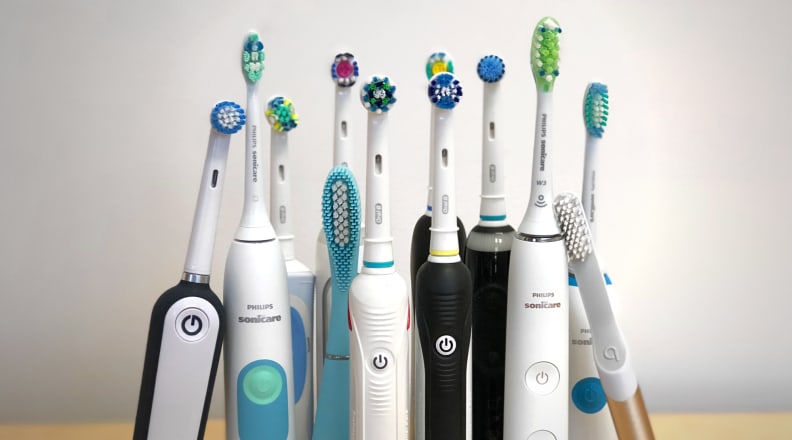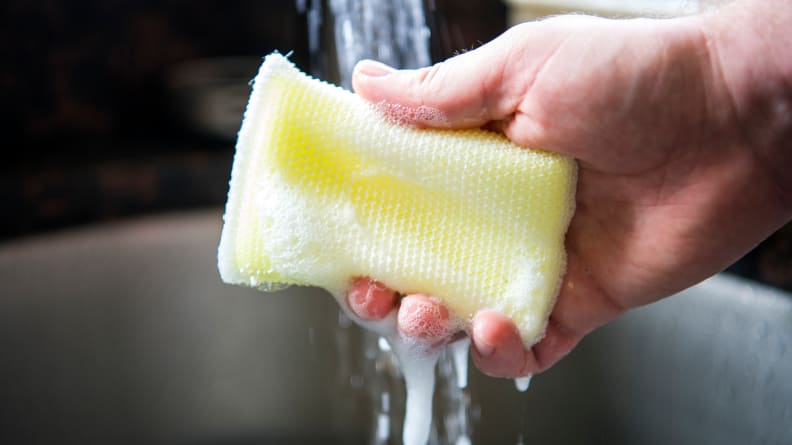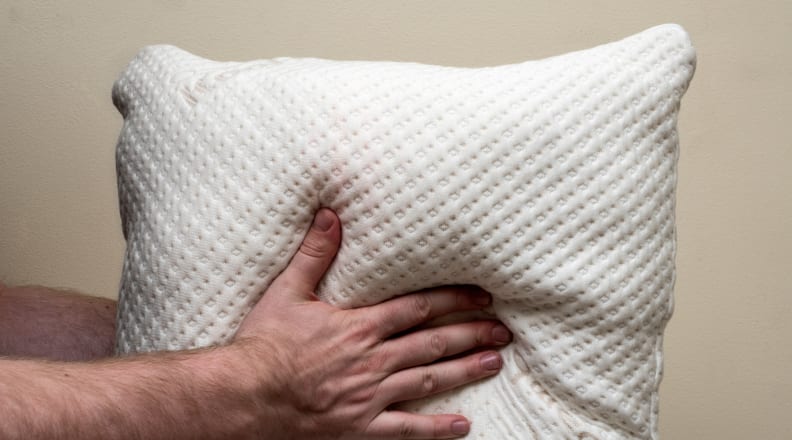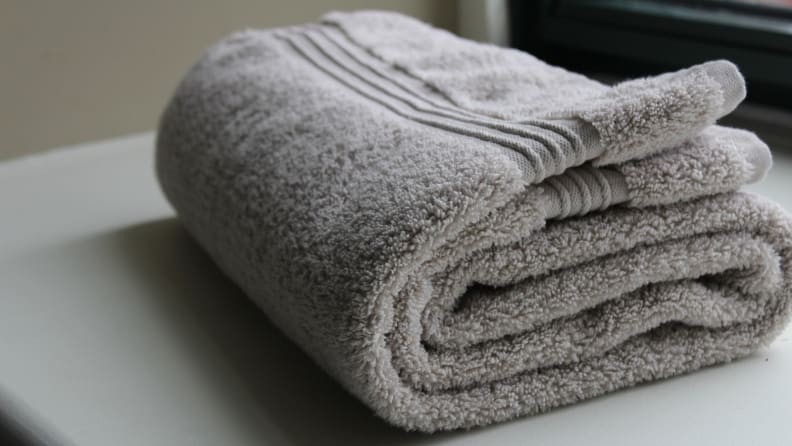Here's how long your household essentials should last
Sometimes it's OK to let go of that old, frayed toothbrush.
Products are chosen independently by our editors. Purchases made through our links may earn us a commission.
When it comes to getting the most out of the stuff I buy, I straddle the line between being thrifty and being outright stubborn; I know how to save money in the store, but I've also been known to cling to a cheap toothbrush well past the point of reasonability.
For products with not-so-clear expiration dates, it can be hard to tell when the time has come for a replacement. Here's a list of some common household items that you might be replacing either too often or not often enough.
How often should you replace your toothbrush?
You should replace your toothbrush every three to four months.
Brushing your teeth is essential, but brushing your teeth with an old, worn-out toothbrush won't get you the type of results that your dentist would be happy with. According to the American Dental Association, most people who brush regularly (that is, two times a day) should replace their toothbrush every three to four months.
The visible state of your toothbrush is arguably more important, though—if you've been using your toothbrush for less than three months but the bristles appear frayed and bent, you shouldn't wait for the recommended three-month threshold to replace it. In other words, if it looks like an old toothbrush, chances are it's time for a new one.
These days, a good deal of of my friends, family, and colleagues are breaking out of the manual-toothbrush-buying cycle by investing in an electric toothbrush. Some of these electric brushes even feature a built-in two-minute timer that ensures that the user is allowing themselves the proper amount of brush time.

Most electric toothbrushes encourage users to brush for a full two minutes. Replacement heads for these toothbrushes don't come cheap, however.
Our editor in chief, David Kender, recently took an exhaustive look at some of the most popular electric toothbrushes on the market in our quest to identify the best electric toothbrush you can buy. In the end, the Oral B Pro 3000 earned a spot at the top thanks to its two-minute timer, its long-lasting battery, and most importantly, its overall comfort.
If you decide to make the switch from manual to electric, you should still abide by the three-to-four-month rule when determining when to install a replacement head.
Buy the Oral B Pro 3000 on Amazon for $87.95
How often should you replace your kitchen sponge?

You should be replacing your kitchen sponge about once a week.
Replace your kitchen sponge once a week.
A study published by Scientific Reports in 2017 concluded that dish sponges are more bacteria-laden than previously thought, since they tend to be warm, wet, and covered in food particles. These researches concluded that dish sponges should ideally be replaced at least once a week—even if you're in the habit of cleaning them in the dishwasher, the microwave, or submerged in boiling water.
Your best bet is to step up your sponge game—it's time to be more thoughtful when it comes to the sponges you buy. Lucky for you, we've done most of the ground work already. In our round-up of the best kitchen sponges you can buy, we found that Scotch-Brite's all-purpose Dobie pads were the overall best option for most people. Plus, a three-pack will only set you back about six bucks—that should last you about a month.
Buy a 3-pack of Scotch-Brite Dobie pads on Amazon for $6.15
How often should you replace your pillows?

It is recommended that you wash your pillows every six months or so. If your pillow begins to lose its shape or becomes flat, you should consider getting a new one.
Your pillows should be replaced every one to two years, if not sooner.
We wouldn't blame you if you've never stopped and asked yourself, "Just how gross are my bed pillows, anyway?" If you wash your pillowcases regularly (and you should), you may be fooled into thinking that a weekly wash is good enough to keep those pillows pristine.
The truth is, your pillows are most likely covered in dead skin cells, dust mites, and dust mite droppings—even if you're in the habit of washing your pillowcases on a weekly basis. In addition to their presence simply being gross, dust mites can be especially problematic for people with asthma or sensitive allergies.
Washing your pillows is an essential—but oft overlooked—household chore that'll go a long way in curbing the creepy crawlies in your bed. Don't worry: We've covered the steps in our guide about how to wash pillows.
But if you're wondering exactly how long a pillow should last before you need to buy a replacement, the best thing to do is to pay attention to the pillow itself. Do you find it to be lumpy, flat, or just flat-out uncomfortable? Are you folding it in the middle of the night for added support? If you're nodding along to any of this, it's probably time for a replacement. The National Sleep Foundation takes these questions a step further and recommends that we all replace our pillows every one to two years, just to be on the safe side.
Buying new pillows can be an overwhelming experience, so we recently set out to test and rank some of the best bed pillows you can buy. After extensive testing and some serious Z-catching, the Xtreme Comforts Shredded Memory Foam Pillow reigned supreme over our testers' king- and queen-sized kingdoms.
As the name suggests, this premium pillow is stuffed with ultra-soft shredded memory foam, and users are encouraged to subtract the foam filling as they see fit. Fancy!
Buy the Xtreme Comforts Shredded Memory Foam Pillow (standard size) on Amazon for $49.99
How often should you replace bath towels?

A towel that's past its prime will lose its softness and absorbency.
If your towel is losing its absorbency, it's time for a new one.
Like pillows, bath towels have a knack for letting you know when it's time for them to go to that magical farm upstate where all of the good towels are free to run and play (and where there's always plenty of towel treats to go around).
Lifespan varies by usage, but here are some signs that your towels are getting old: * They've lost a substantial amount of their absorbency. * They're fraying around the edges or the stitching is coming undone. * The fabric is flattened or worn-down.
There are ways to extend the lives of your bath towels, however. We recently outlined the best way to wash towels with an emphasis on keeping towels soft and absorbent as long as possible.
If you've decided that your towel's time is up, consider wrapping yourself in a new one. We put ten of the most popular bath towels to the test and our pick for the overall best was the Fieldcrest Spa Bath Towel, a cotton-made towel that clocks in at 30-by-56-inches and offers astounding absorbency for a low cost.
Buy the Fieldcrest Spa Bath Towel for $12.99 at Target
How often should you replace a loofah?
Actually, you shouldn't be using a shower loofah to begin with.
I don't mean to alarm you, but that $3 pouf ball thing you've got hanging up in your bathroom right now is a straight-up nightmare. It's full of dead skin cells, potentially harmful bacteria, and because it's never really completely dry, it's getting worse by the minute. Dermatologists hate them, I hate them, and for cryin' out loud, you deserve better.
If you can't bring yourself to lather with your hands or a washcloth, consider Salux Japanese nylon bath cloths. They're long enough to scrub your back, can be hung up to fully dry on a towel rack, and won't fall apart in a washing machine. They've helped me with breakouts, dry skin, and maintaining some peace of mind. Grab a three-pack for around $12 and don't look back.
Buy a 3-pack of Salux nylon bath cloths on Amazon for $12.50)
